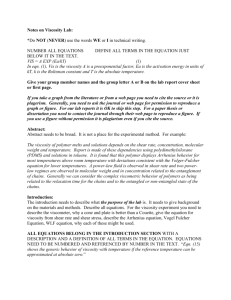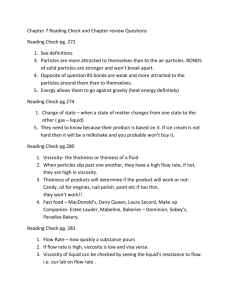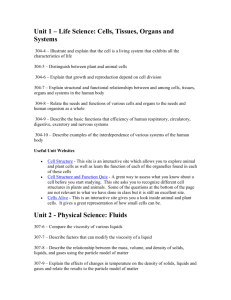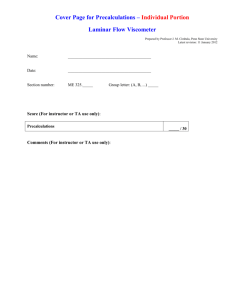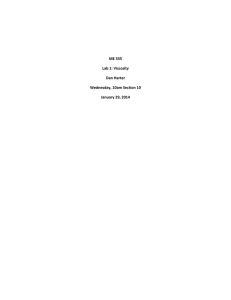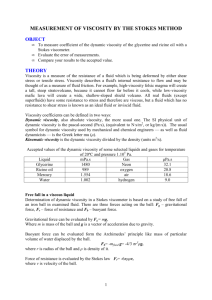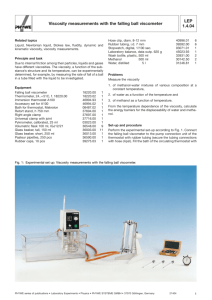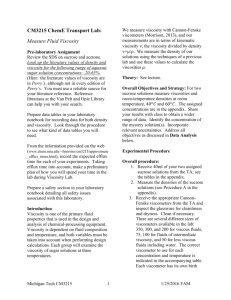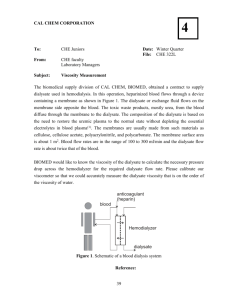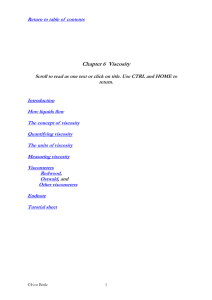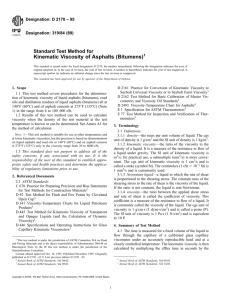Factors controlling heat exchange between the human body and its
advertisement
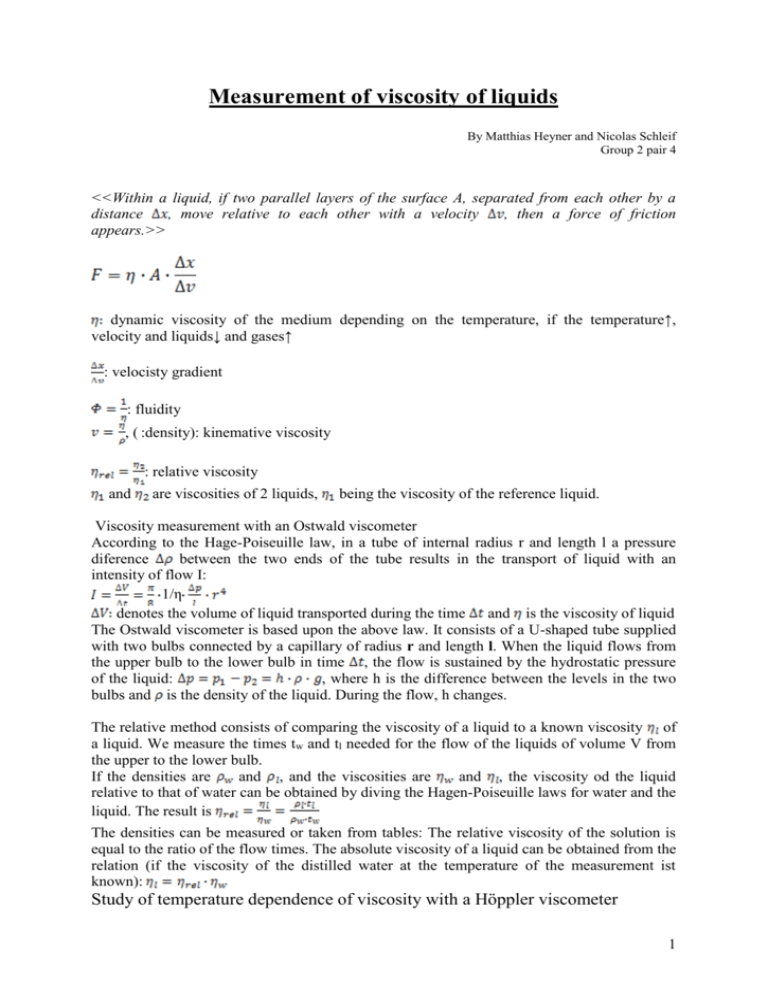
Measurement of viscosity of liquids By Matthias Heyner and Nicolas Schleif Group 2 pair 4 <<Within a liquid, if two parallel layers of the surface A, separated from each other by a distance , move relative to each other with a velocity , then a force of friction appears.>> dynamic viscosity of the medium depending on the temperature, if the temperature↑, velocity and liquids↓ and gases↑ : velocisty gradient : fluidity , ( :density): kinemative viscosity : relative viscosity and are viscosities of 2 liquids, being the viscosity of the reference liquid. Viscosity measurement with an Ostwald viscometer According to the Hage-Poiseuille law, in a tube of internal radius r and length l a pressure diference between the two ends of the tube results in the transport of liquid with an intensity of flow I: 1/η denotes the volume of liquid transported during the time and is the viscosity of liquid The Ostwald viscometer is based upon the above law. It consists of a U-shaped tube supplied with two bulbs connected by a capillary of radius r and length l. When the liquid flows from the upper bulb to the lower bulb in time , the flow is sustained by the hydrostatic pressure of the liquid: , where h is the difference between the levels in the two bulbs and is the density of the liquid. During the flow, h changes. The relative method consists of comparing the viscosity of a liquid to a known viscosity of a liquid. We measure the times tw and tl needed for the flow of the liquids of volume V from the upper to the lower bulb. If the densities are and , and the viscosities are and , the viscosity od the liquid relative to that of water can be obtained by diving the Hagen-Poiseuille laws for water and the liquid. The result is The densities can be measured or taken from tables: The relative viscosity of the solution is equal to the ratio of the flow times. The absolute viscosity of a liquid can be obtained from the relation (if the viscosity of the distilled water at the temperature of the measurement ist known): Study of temperature dependence of viscosity with a Höppler viscometer 1 The temperature dependence of the viscosity of liquids can be explained by means of the hole theory of Frankel. According to this theory, the number of molecules having thermal energy is higher that the activation energy needed to produce a hole. From a consideration of the Boltzmann distribution, the number of such molecules is proportional to , -23 where T is the absolute temperature, and k=1,38 10 J/K is the Boltzmann constant. Activation energy: Stokes Law If a ball moves with a velocity V, in resting liquid, then the liquid exerts a force on the ball. The velocity can be calculated as The weight of the ball: If the ball covers a distance h in time t, then the velocity is v=h/t: Introducing 2r2g/9h=K: η=K The Höppler viscometer It is based upon the strokes law. The Höppler viscometer consists of a cylindrical glass tube C fittet with a special stopper D which ensures bubble free filling with the liquid. Ultrathermostat It is used to ensure the appropriate temperature. Instructions 1. Fill the inner tube with liquid and place the ball in it. The level L should be set by means of screws S. 2. Set the thermometer T to the initial temperature of measurement. Switch on the thermostat and keep it working for about 10 minutes to ensures the desired temperature in the liquid. 3. By turning the viscometer around its axis 0, repeatedly measure the time of fall t of the ball between marks a and b. 4. Regulate the heating of the ultrathermostat and measure the time of fall at the different temperatures, as described above. 5. After finishing, carefully wash the tube. 6. Determine the density of the liquid by one of the methods described, or take it from a table. Experiments 1. Determine the temperature dependence of the viscosity of a glycerol – water mixture between 25 and 50 degrees Celcius in 5 degree steps. 2. Prepare the diagram of the temperature dependence of the viscosity of the misture. 3. Plot ln as a function of 1/T and determine the values of E and A in Equation 4.6: 2 Table T 55 30 35 40 45 50 1/T 1/T t1 (sec) ln 3


